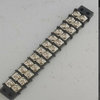I can't seem to figure out how to upload a picture. The picture is on my PC but when I click on the "image" icon it wants me to put in a URL. The "Upload a File" button goes through the motions of uploading but then says "there was a problem uploading your file". Is there a Help area where I can go to learn what I'm doing wrong so I don't have to waste everyone's time on my learning?
Since the new owners took over the site, it has become more difficult to upload pictures, especially pictures with a large number of pixels. It seems the "optimum" size is something about 100,000 pixels or less in size. The question then is what software do you use to decimate your photo to fit within the optimum size limit? I usually use Microsoft Paint, but there is plenty of image editing software out there, some of it still free, that will do the job. Be sure to save your edited image with a different filename than the original, just in case you need to edit the original again.
If you already have an image that meets the size criterion, just copy it to the Clipboard in Windows (type <ctrl> C) and then insert it somewhere in your text message (type <ctrl> V). Sometimes the Electronics Point forum software will ask whether you want a "thumbnail" or a "full size" image inserted in your post. I almost always choose to insert the full size image so the reader doesn't have to jump through yet another hoop just to view my uploaded image.
PDF (Postscript Documentation Format) files are another animal entirely. If they are small enough, they can be inserted in-line using the copy-and-paste procedure described above. Or you can insert them as attachments, which I don't like. My version of Windows 10 will open a new window for attached PDF files, but then it calls my Adobe Acrobat application to display them. There is nothing in the opened window, and I have to remember to close it, lest it use up precious dynamically allocated memory.
As for terminal blocks, or barrier terminal blocks, these come in a HUGE range of sizes and styles. Visit
this link for some images and links to sources. If what you have is a screw-terminal (as opposed to a solder-terminal) block, these are often specified by the screw size or wire gauge used to secure forked or ring terminals attached to wires. Center-to-center spacing (pitch) of the screws is another common parameter that you could also search against.
Because of the way terminal blocks are manufactured, lengths vary widely. I often scrounge terminal blocks with more terminals than I need, and then use a hack-saw to shorten them to lengths containing two more terminals than needed. The two unneeded end terminals are then drilled out (after removing their screws of course) and the now-empty holes on the end are used to mount the terminal strip to a chassis or breadboard or whatever.







